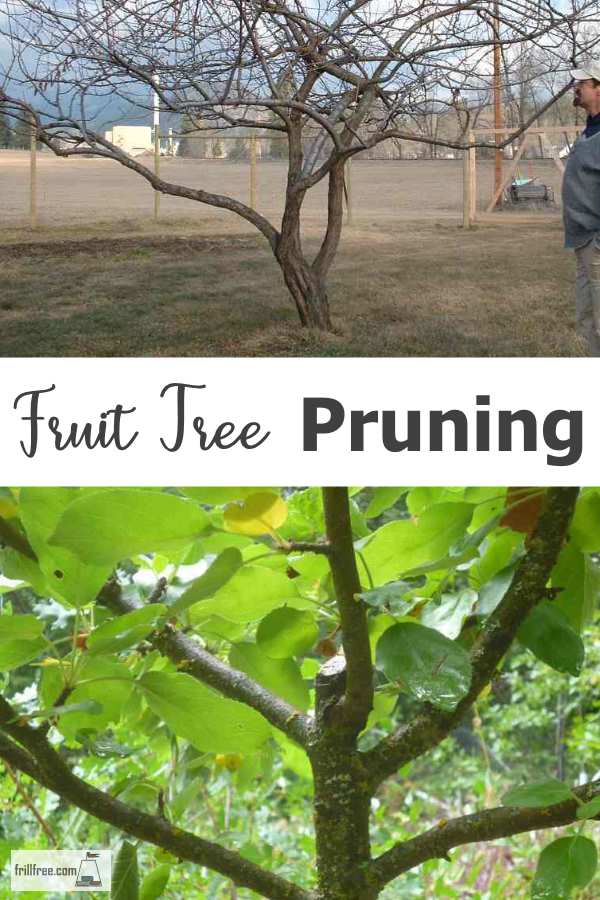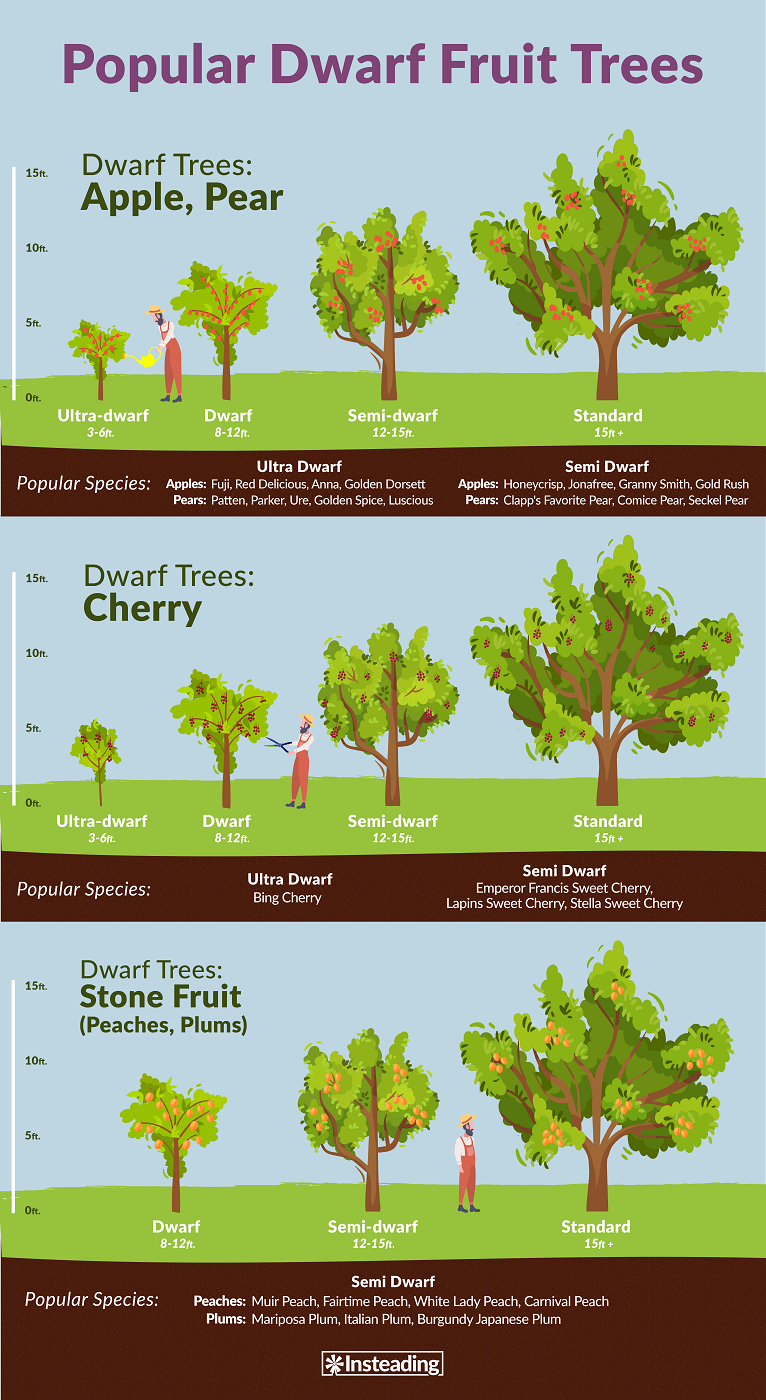- Homesteading
- How to Grow Organic Fruit
- Fruit Tree Pruning
Fruit Tree Pruning
Techniques for Better Fruit Production
Fruit trees require thinning and shaping for them to continue to produce fruit. Left to their own devices, they become overgrown and the fruit will be small and misshapen.
It doesn't require a degree in horticulture to become good at
pruning; practice makes perfect. Learning by doing is the best way to
gain confidence. A few rules about what to do and when will be all you
need.
Fruit trees are dependent on us to shape and thin the branches. Without our intervention, they'll grow lots of competing branches and eventually they'll be lucky to produce a few wizened apples.
The rules for pruning are simple; remove dead, dying, crossing or diseased branches.
I like the one about making sure there is enough room for a robin to fly between the branches. This gives each branch enough space around it to provide sunlight on all the leaves.
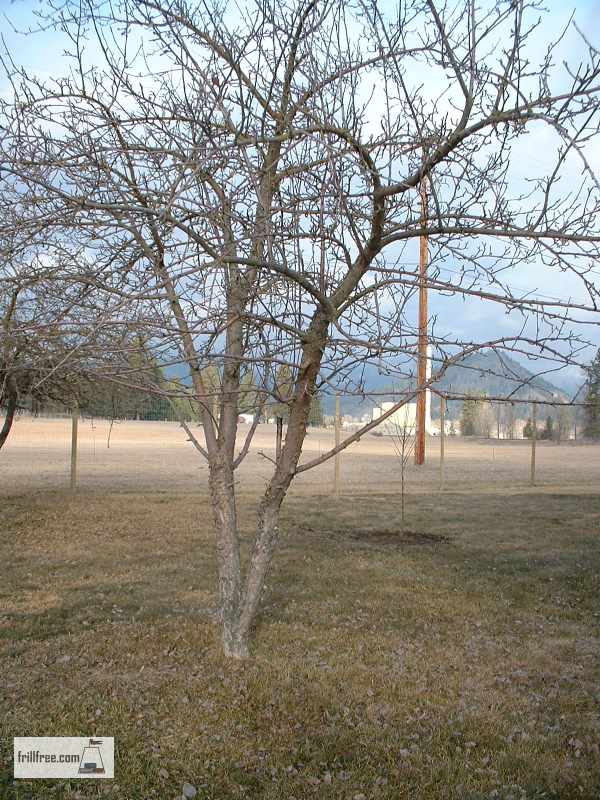 Overgrown and neglected apple tree before pruning commences
Overgrown and neglected apple tree before pruning commencesIt's important to shape the tree in it's first few years, even if
that eliminates the fruit spurs, which is where the flowers and the
fruit form. Start 'em young, I always say. Then you avoid having to
cut off major branches to get it back under control.
A scaffold of branches that will be at an angle to the trunk (making a good strong join) and even distance between each branch so that sunlight can reach into each leaf is the aim. There are several ways to form the scaffold;
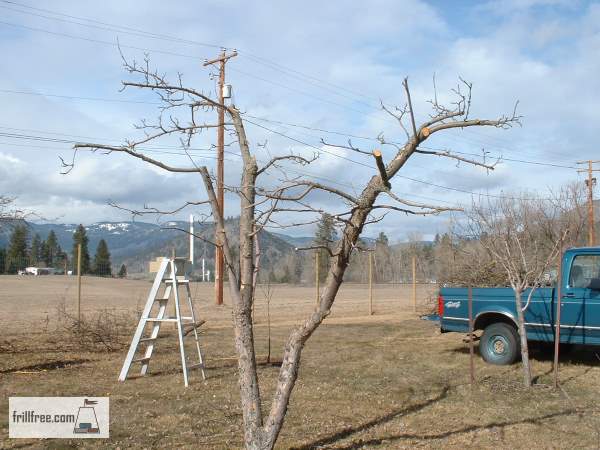 And after, it becomes a healthy and happy tree
And after, it becomes a healthy and happy treeA chalice or goblet shape is commonly used so that the tree doesn't get too tall. Picking fruit from the ground is much safer than from a ladder or scaffolding.
Each branch emerges from around the same height on the trunk, and then pruned to form an upward curve.
In time, these branches will form other smaller branches, and once the fruit forms, they will end up almost horizontal under the weight of it.
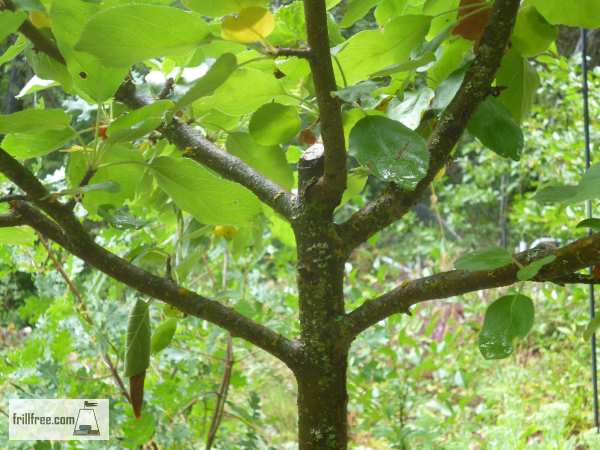 These branches all emerge from the same spot on the trunk, spaced around it...
These branches all emerge from the same spot on the trunk, spaced around it...Another scaffold shape is in tiers, with several layers of branches. These are best in a commercial orchard situation where it's more convenient to pick the fruit with mechanical implements.
In the home orchard, I like to have a low growing tree - most grafted trees will be grafted onto a dwarfing rootstock, which makes it possible to keep them small and compact. There's nothing like standing on the ground and picking fruit.
When's the best time to prune fruit trees?
Apple trees, along with their cousins, pear and quince trees should be pruned in early spring, before the sap starts to run which is a fancy way of saying before the leaves start to bud.
In some methods of
fruit tree pruning such as espalier (training a tree to grow against a
wall or trellis) there is also some summer pruning, but for ordinary
pruning, stick with the one time in spring.
Prune, plum,
apricot and peach trees should be pruned in August so they don't bleed,
or leak sap. The reason? The wounds won't heal and the sweet sap can
attract ants and other pests, as well as mold.
Always remove any diseased branches you cut off - don't leave them nearby to reinfect the tree.
Learn more about the difference between full sized Heritage varieties, and dwarf fruit trees - which one will be more suitable for your garden?
